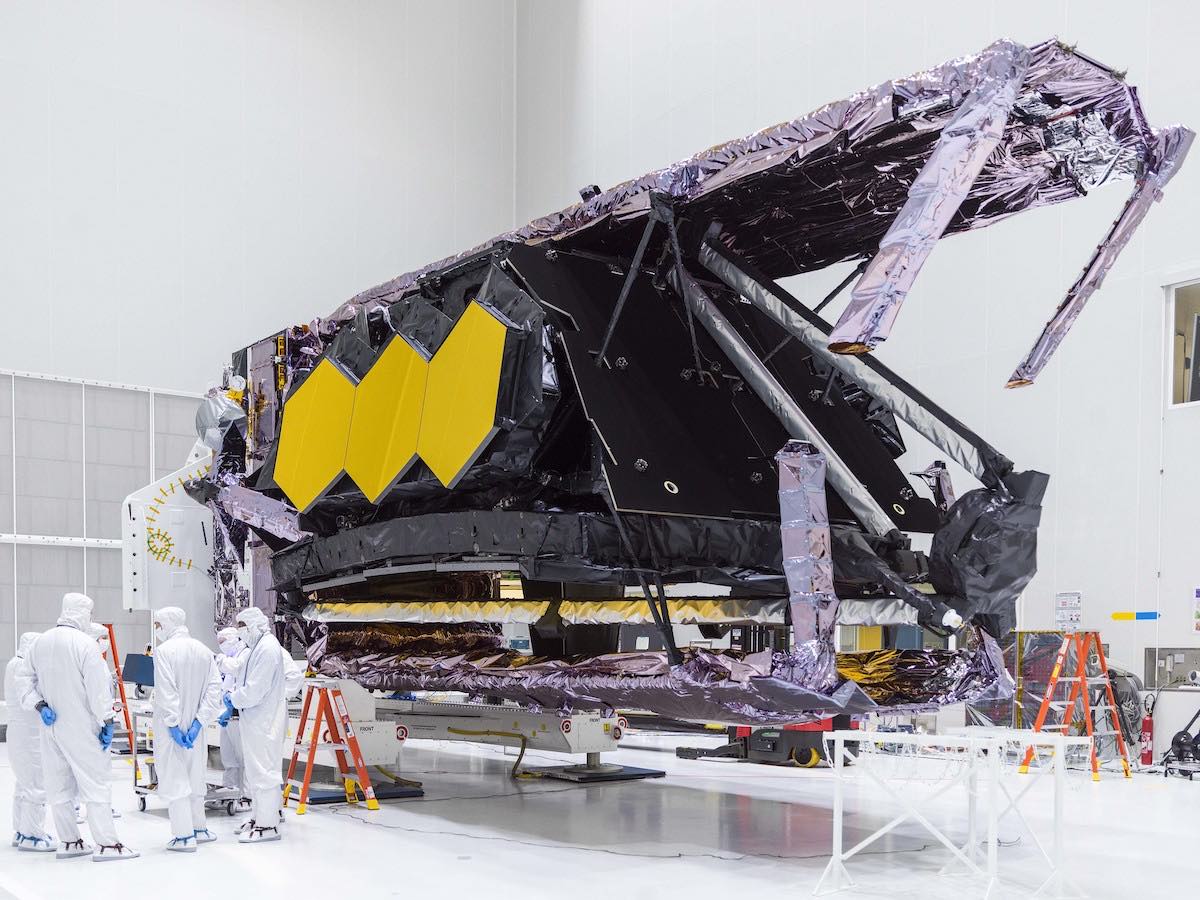
Engineers removed the James Webb Space Telescope from its intercontinental shipping container in South America last week, and kicked off a final pre-launch comprehensive electrical systems test Monday ahead of blastoff in December on an Ariane 5 rocket, NASA’s program manager said.
The observatory arrived Oct. 12 at the Guiana Space Center, a spaceport run by the French space agency CNES and the European Space Agency, after a 16-day journey by boat from Southern California, where Northrop Grumman assembled and tested Webb.
The $10 billion mission, more than two decades in the making, is scheduled for launch Dec. 18 on a European Ariane 5 rocket. The launch window opens at 7:20 a.m. EST (9:20 a.m. local time; 1220 GMT).
The launch on an Ariane 5 rocket is one of the major contributions to the mission by ESA, which also supported development of several of Webb’s scientific instruments. The observatory is designed to peer more than 13 billion years in time to see the universe as it was after the Big Bang, the unimaginably violent event that created the cosmos.
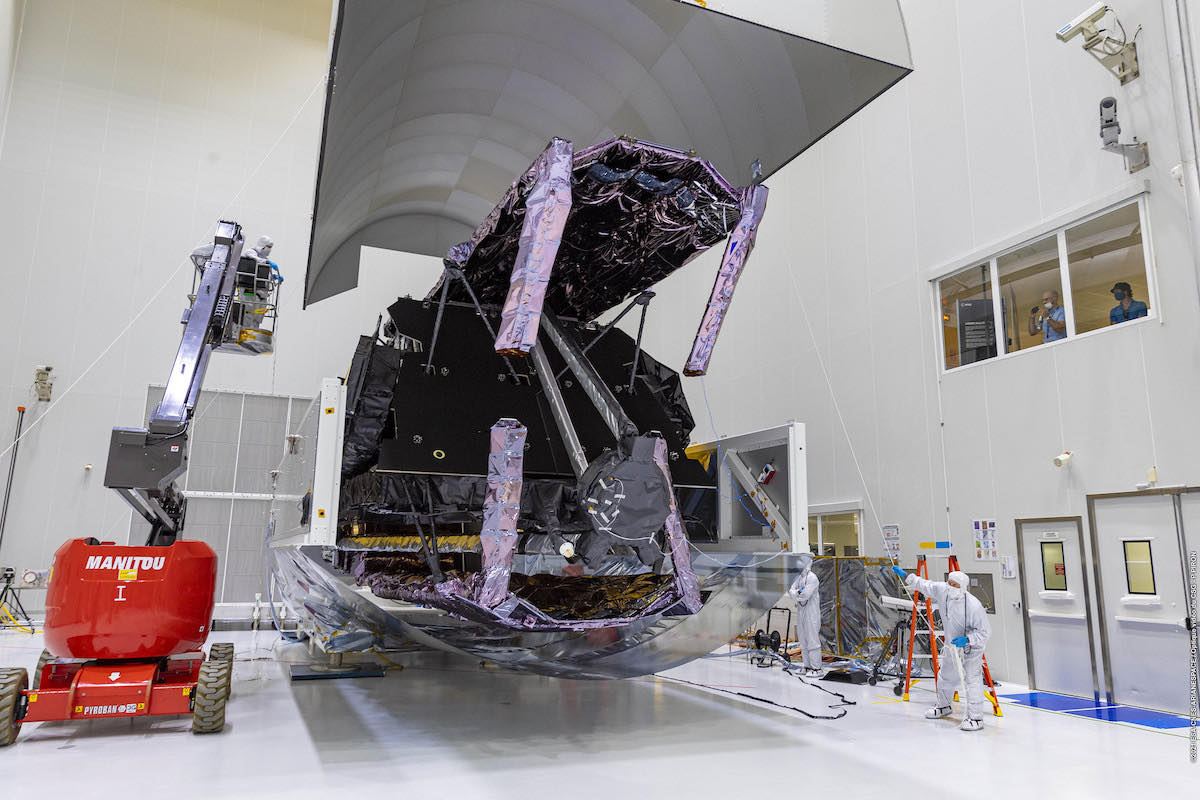
Webb will also observe the cores of distant galaxies, study how stars form and evolve, and look at planets around other stars, revealing new insights into their atmospheres, like whether they might harbor the building blocks for life.
Since arriving last week in French Guiana, Webb was trucked to the S5C payload processing facility and removed from its custom-built transporter, and ground teams are started testing the observatory to ensure it’s still in good health following the ocean journey from California.
“It’s out of its shipping container, it’s gone vertical, and we’ve restarted our final major systems test today,” said Gregory Robinson, Webb’s program director at NASA, in a town hall meeting Monday. “It will last just over a week. We’ll do final closeouts, We’ll move over and get it fueled in a few weeks, and then mate it to the rocket and encapsulate it in the fairing and get it off the ground on Dec. 18.”
Eric Smith, NASA’s program scientist for Webb, said there about 11 days of margin in the schedule for liftoff Dec. 18.
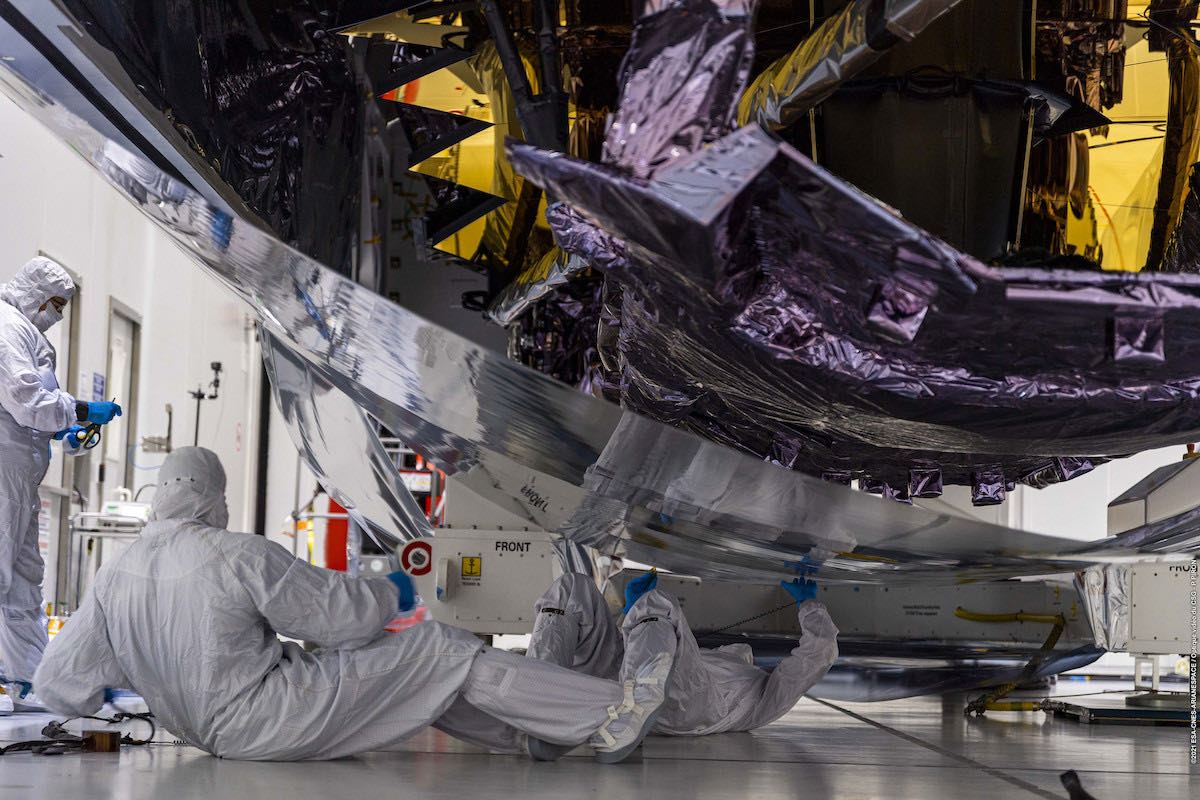
The combined systems test that began Monday verifies electrical systems on the observatory are functional.
“There will be no deployments anymore for the observatory until it’s actually in space,” Smith said last week. “So they do all the electrical testing, do some communication checks, go through a final observatory closeout with some final pieces of multi-layer insulation that they put on places (on the spacecraft).”
The observatory will launch with its primary mirror, comprising 18 individual gold-coated segments, folded up origami-style to fit inside the Ariane 5 rocket, which has one of the largest payload compartments of any operational launch vehicle. The spacecraft stands about 35 feet (10.7 meters) tall in its launch configuration.
Webb’s solar array, secondary mirror, and thermal sunshield are also stowed for launch. All of the elements will unfurl one-by-one after liftoff in an intricate, highly-complex deployment sequence unlike any attempted by a previous space mission.
The telescope’s mirror, with a diameter of 21.3 feet (6.5 meters) once deployed, is the largest ever flown in space.
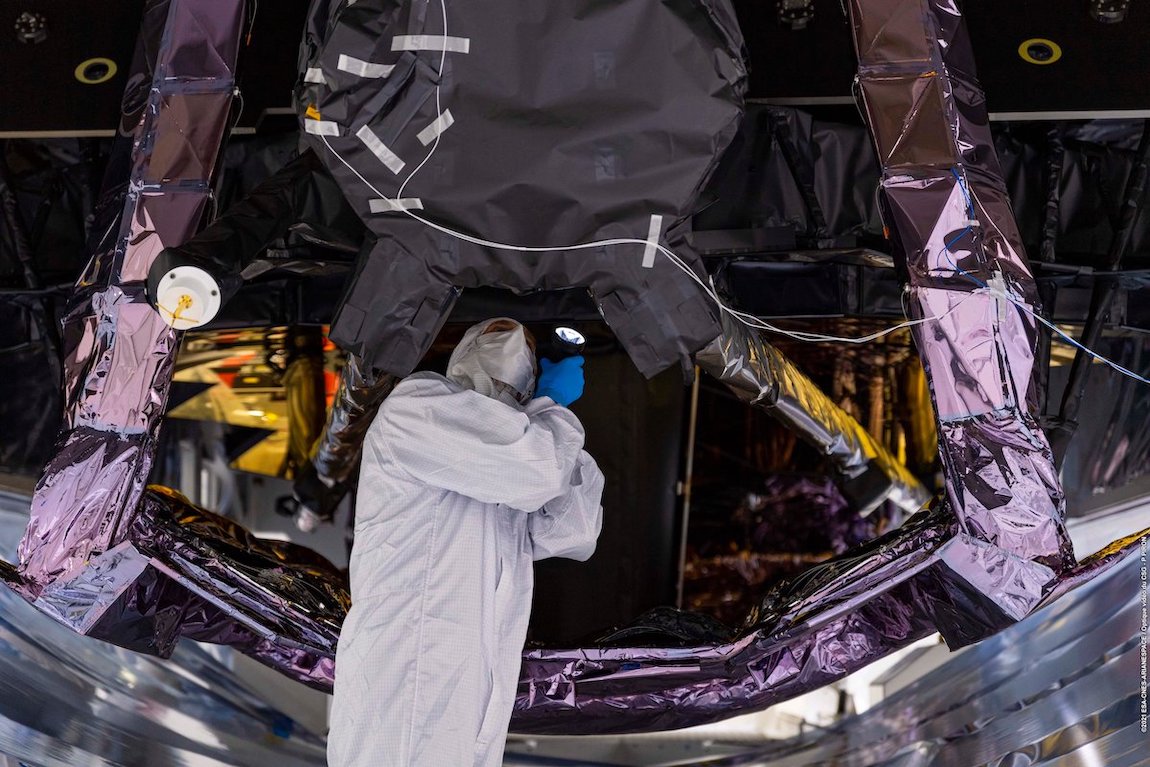
The Ariane 5 rocket will dispatch Webb toward the L2 Lagrange point, a gravitationally-stable position a nearly a million miles (1.5 million kilometers) from the night side of Earth.
Webb is a successor to the Hubble Space Telescope, which has been orbiting Earth since 1990, but will see the universe in different wavelengths, primarily infrared. Hubble’s science instruments are tuned to astronomical observations in ultraviolet and visible bands, with some capability in near-infrared.
Webb’s development has faced ballooning costs and scheduled delays. It survived several close calls with cancellation.
In order to detect faint heat from faraway cosmic sources, Webb will deploy a five-layer sunshield the size of a tennis court about six days after launch. The telescope’s instruments will be cooled down over several months, but one payload has detectors that must be cryogenically chilled to a temperature of minus 448 degrees Fahrenheit (minus 266 degrees Celsius).
After a series of calibration steps, NASA expects to release the first images from Webb about six months after launch.
More photos of Webb inside the S5C payload processing facility are posted below.
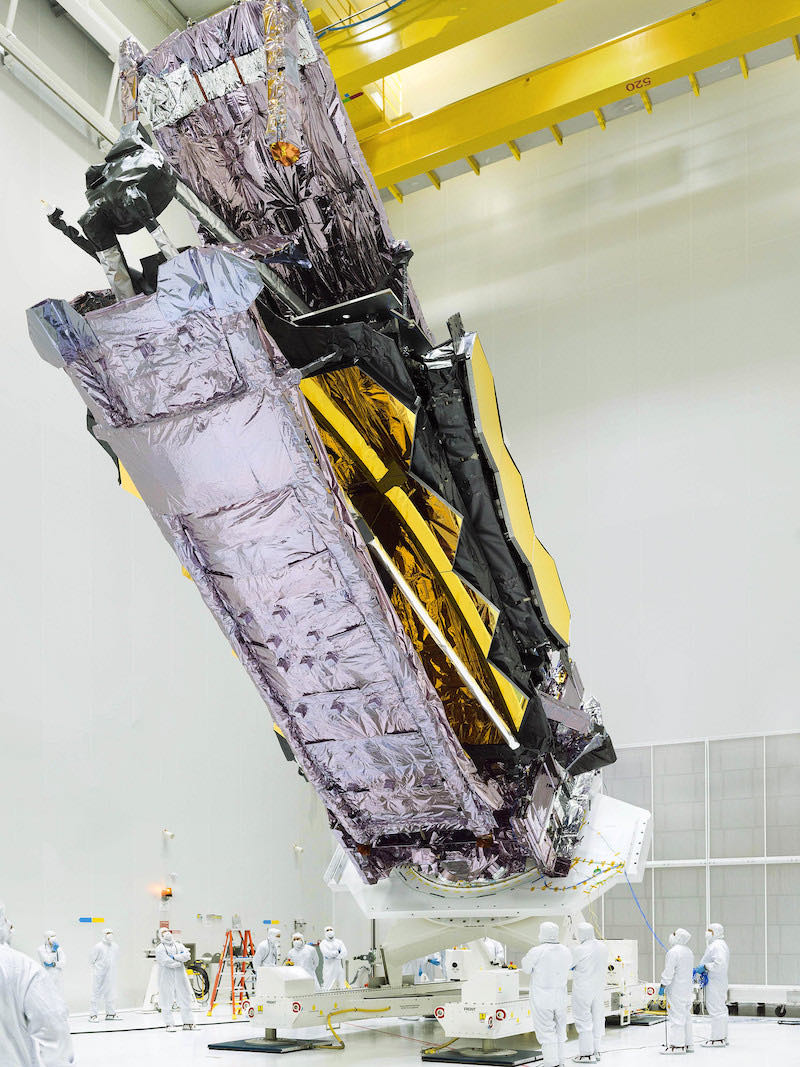
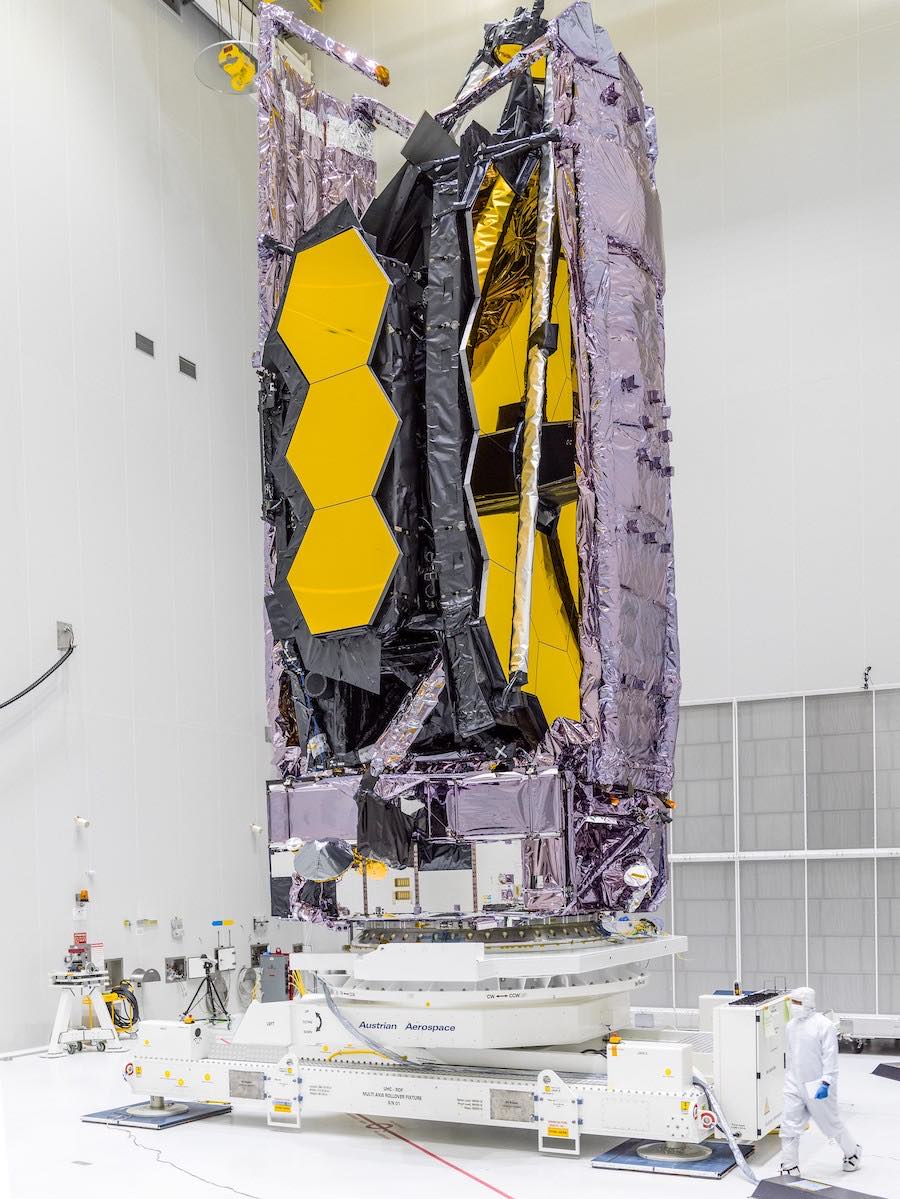
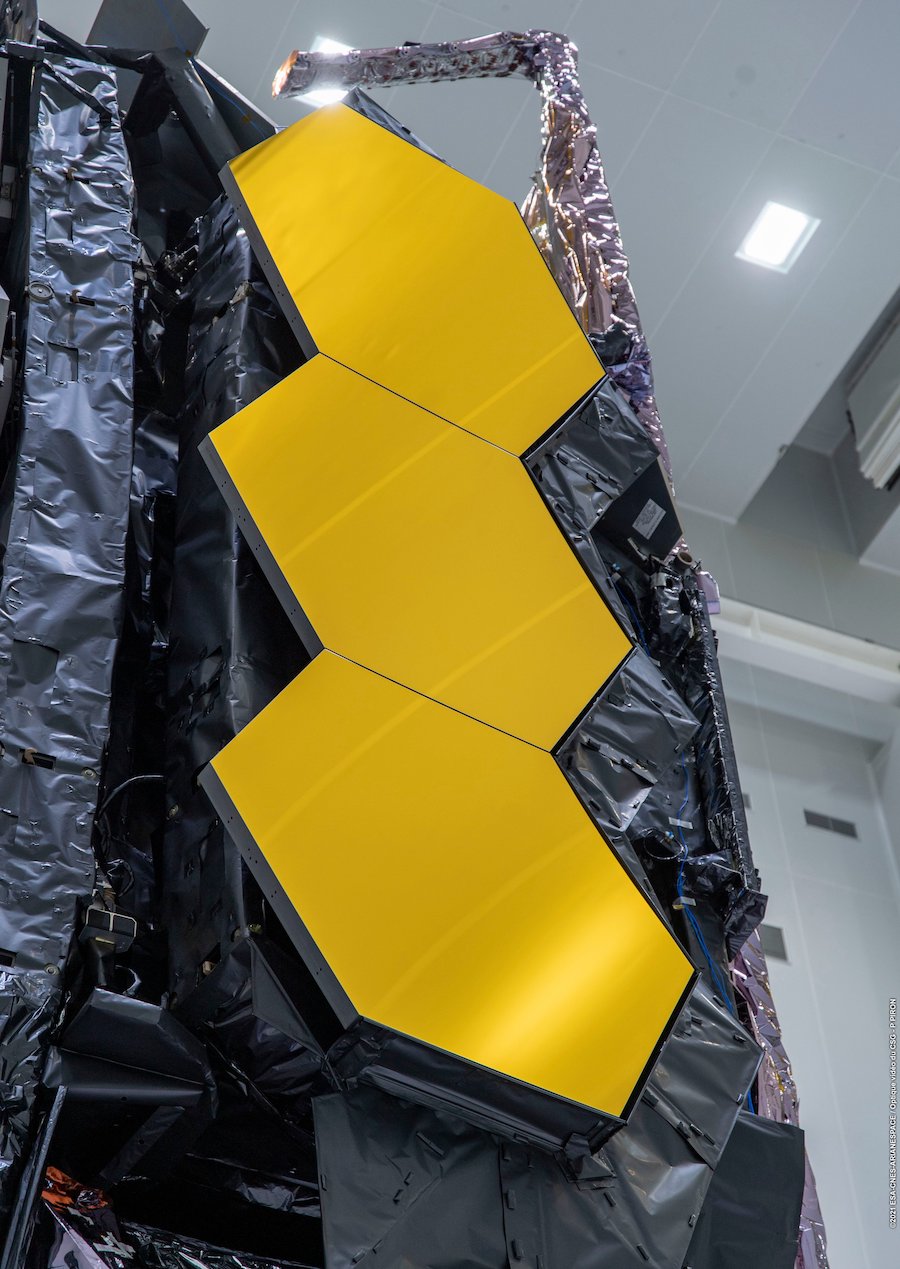
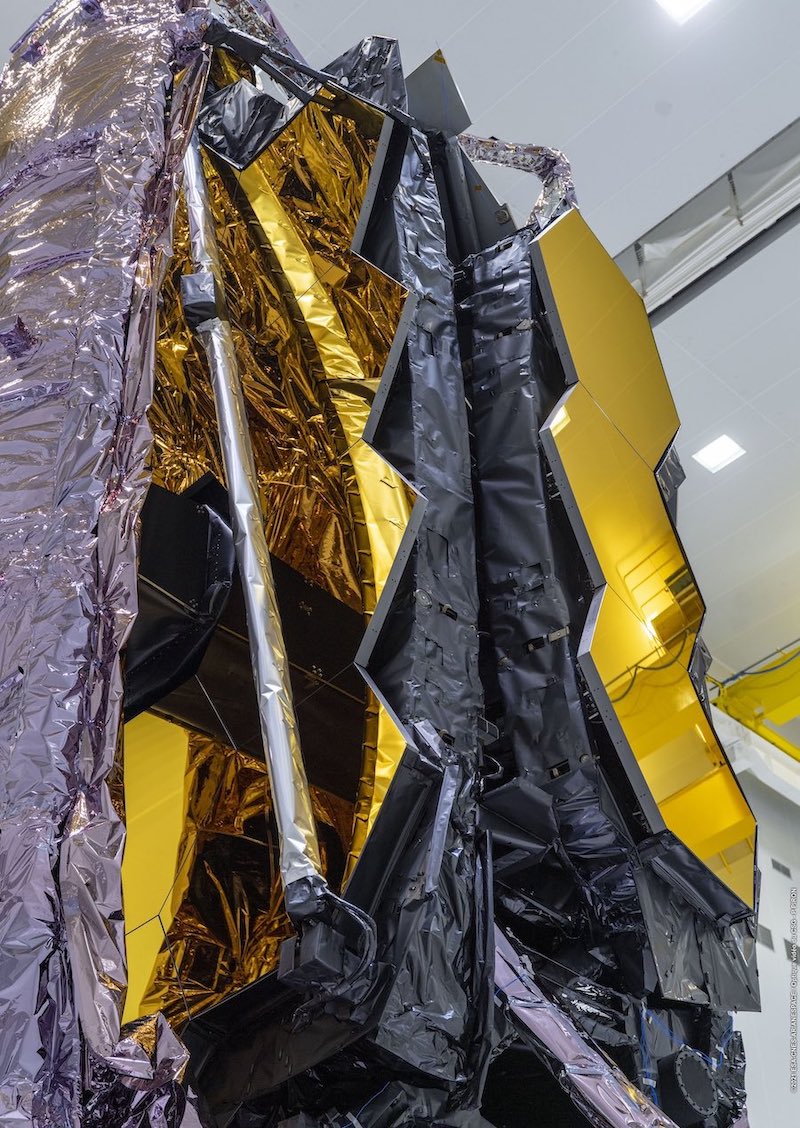
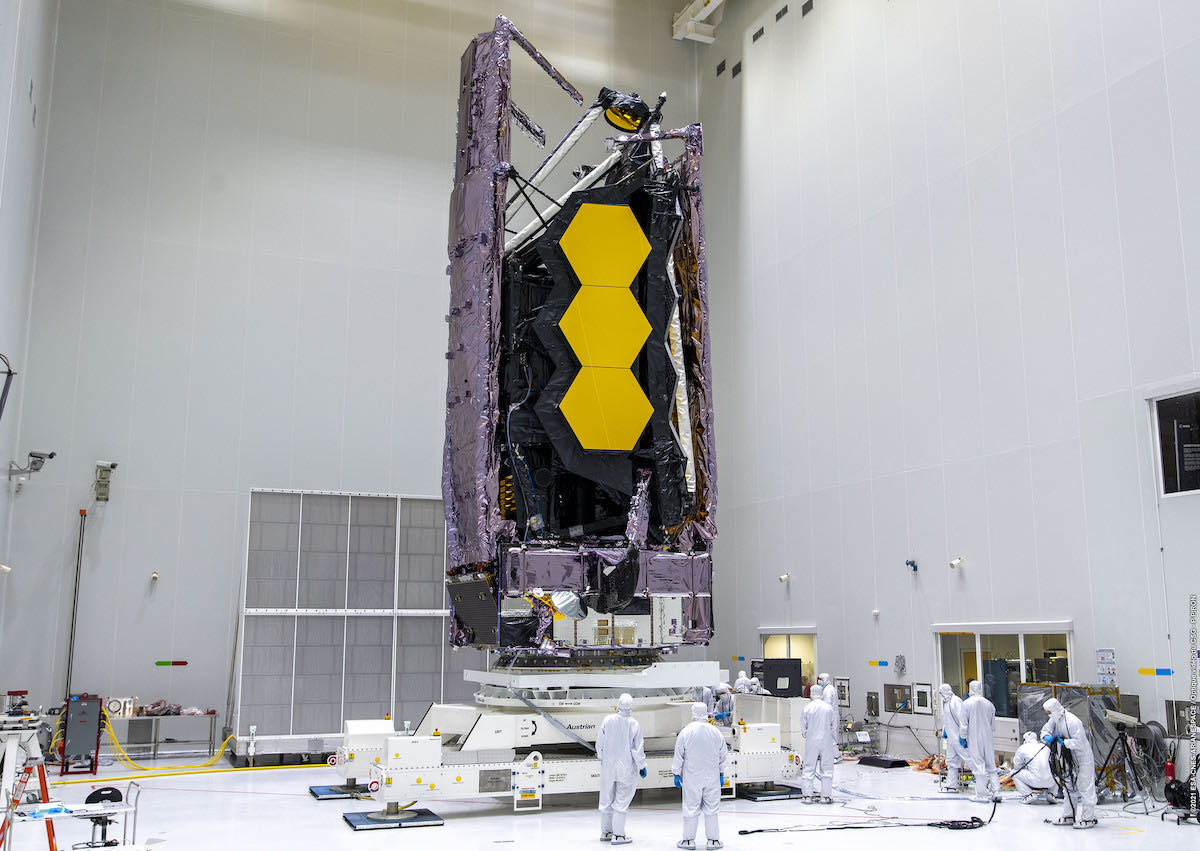
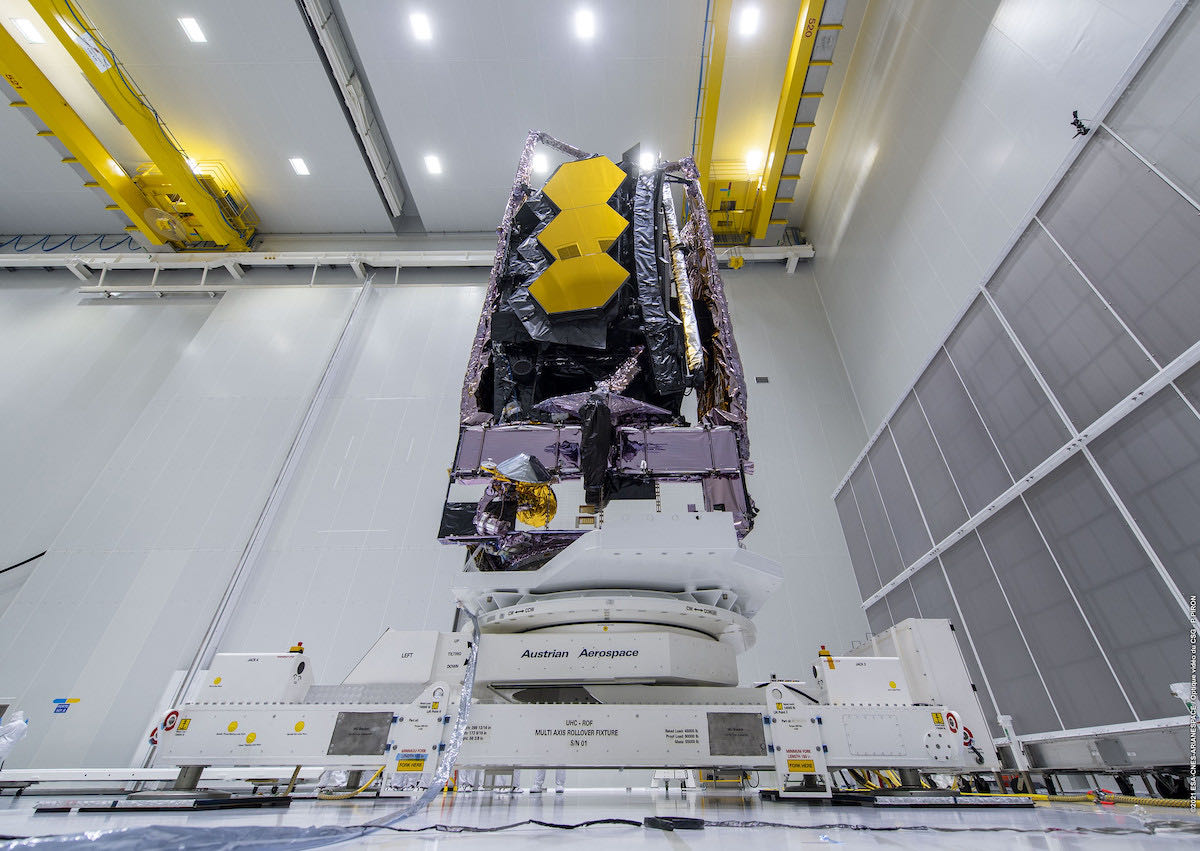
Email the author.
Follow Stephen Clark on Twitter: @StephenClark1.
